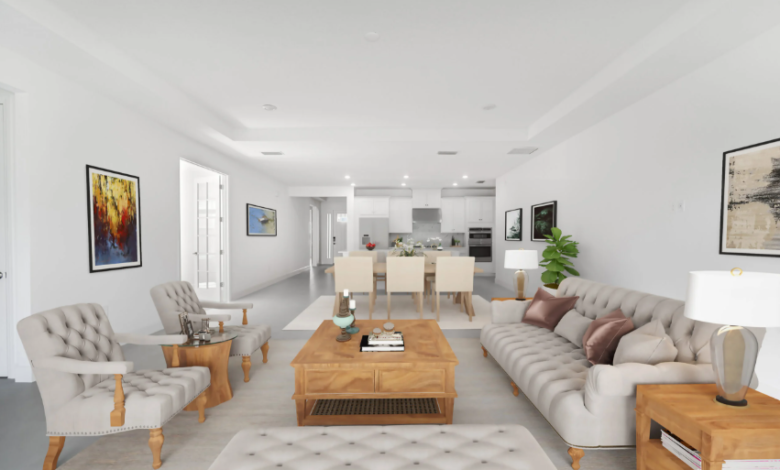Virtual Staging vs. Traditional Home Staging: Pros and Cons Comparison

Real estate marketing is at the evaluation stage, especially with the emergence of virtual home staging. Virtual home staging has provided the flexibility of design to buyers and sellers. In the past, the real estate industry used traditional staging of properties. However, virtual staging AI is cost cost-effective option compared to the traditional staging process.
Before the construction of home or commercial units, developers need to figure out the space for different items. Traditional home staging provides tangible features, but it is time-consuming and costly. On the other hand, virtual AI staging can provide you with flexibility and reasonable cost savings. You can avoid the logistical challenges by applying the virtual type of staging for construction projects.
What is Traditional Staging?
Traditional home staging involves the physical furnishing of the home. You are decorating a home to adjust different furnishings like pieces of furniture, art, and rugs.
Pros
- Originality: There is one of the originality factors in the traditional staging process. It is a first-hand experience of the property, and it is all about originality and reality.
- Emotional Attachment: A buyer can feel more emotionally connected by visualizing themselves living in the space.
- Customizable: The physical staging is customizable based on the direction of the buyer’s feedback or property changes.
Cons
- High Costs: It is costly to rent out the furniture, and it can be around $1000, especially for larger homes. So the physical staging is costly compared to the AI staging.
- Logistical Challenges: The logistical challenges and transportation of furniture require significant time.
- Limited Design Flexibility: There is limited design flexibility while using the physical home staging changes, which requires physical effort and additional expenses.
See also: Benefits of Lutron Home Automation for Residential and Commercial Spaces
What is Virtual Staging?
Virtual AI staging requires only digital technology compared to physical staging. In virtual home staging, you can add furniture, décor, and design elements with the help of the software. You can alter the interior and exterior of the design based on the buyers’ directions.
Pros:
- Cost-Effective: Normally, the AI staging cost is equal to a fraction of the traditional staging, which makes it a budget-friendly option.
- Design Flexibility: When you apply design staging virtually to the home setting or any kind of construction project. Then it is customized to suit various buyer preferences.
- Quick Turnaround: The virtual staging AI only requires 24-48 hours, speeding up the listing process and changing it in the direction of users of homeowners.
- No Physical Setup Required: There is no need for the physical movements of the furniture and different elements of decoration for staging the property.
Cons:
- Lack of Physical Interaction: In virtual home staging, buyers cannot physically interact with the staged elements, which reduces the emotional attachment.
- Potential Misrepresentation: Virtual AI staging does require expertise, as it can mislead buyers if not executed professionally.
- Dependent on Quality Photography: The virtual home staging does require quality images and high-resolution photographs of the property.
Cost Comparison of Traditional and Virtual Staging:
The cost comparison of traditional and virtual home staging is given in the following table:
| Aspect | Traditional Staging | Virtual Staging |
| Initial Cost | $2,000 – $10,000+ per home | $100 – $500 per room |
| Ongoing Costs | Rental fees for furniture and décor | None |
| Customization Costs | Additional fees for adjustments | Typically included in the base price |
Conclusion:
Both traditional and virtual home staging have their pros and cons, but virtual home staging is more adaptive to modern-day construction. All in all, you need to use virtual home staging to save the cost and time compared to physical staging.


